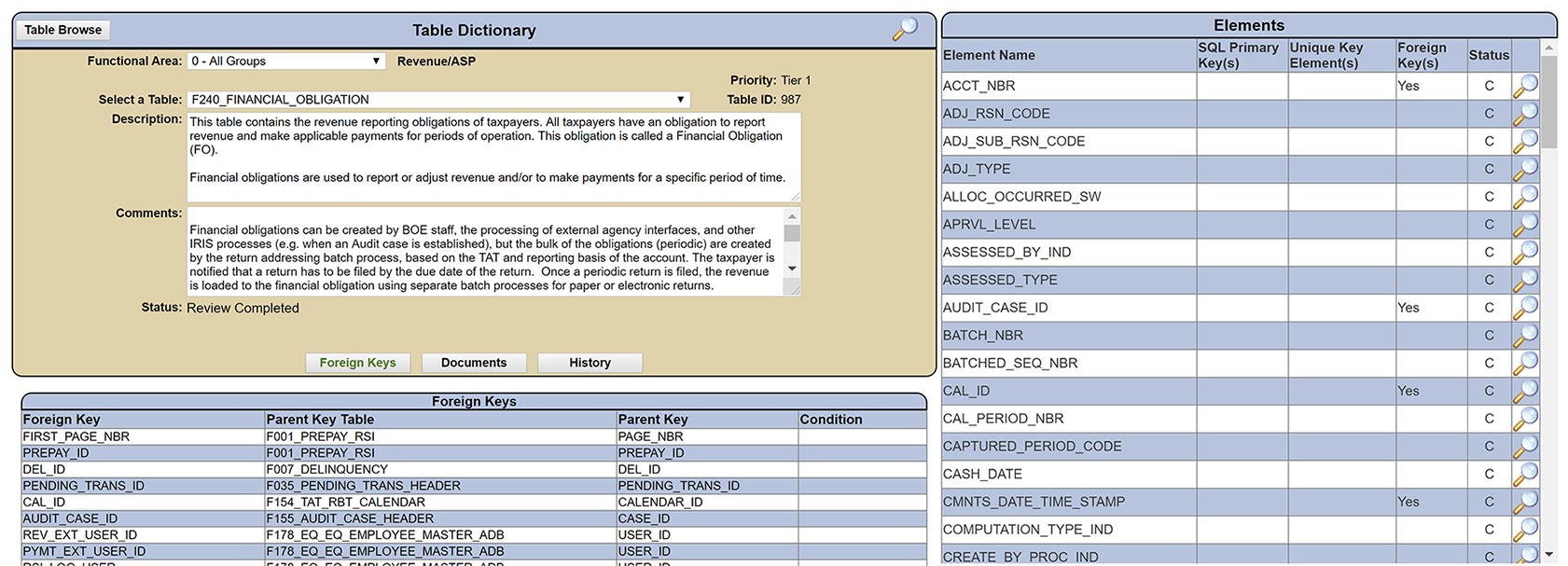Data Dictionary
Table Dictionary
The most essential, and perhaps most difficult step in the data conversion process, is to pull together a pragmatic understanding of legacy system data and perform the data analysis. Conducting a current environment data analysis to assess whether the data migration for a particular system, table, or element is viable, how much time data migration will require, what technology is required, and what potential issues the project team will have to face is important. The CMT tool supports this activity through the use of the Table Dictionary. The table dictionary contains information related to a database table including primary/foreign/unique keys, descriptions, elements and other table-related information. A sample CROS project table dictionary is shown below:
Element Dictionary
In addition to defining a table, each element on the table needs to be defined and analyzed. The element dictionary tracks detailed element level information such as the data format and length of the field, the field description, whether the field is a primary key, foreign key, or makes up part of a unique key for the table. In addition, any data quality rules are created in the element dictionary as edits which are applied to the data to identify data quality issues. If an element is a reference code field, code values are maintained in the element dictionary as well. Below is a sample screenshot of the element dictionary:


